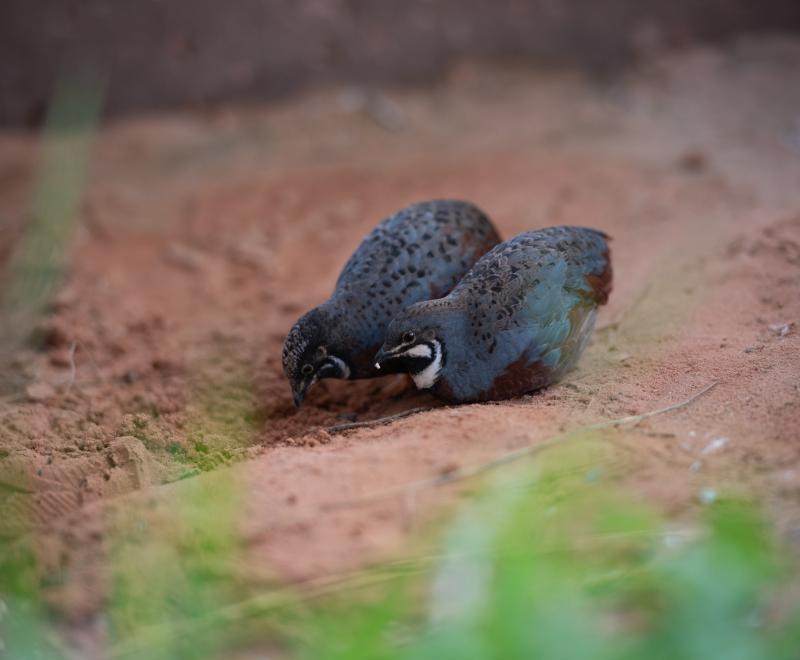Spicing up life for wild ambassadors at Best Friends

Variety is the spice of life. A variety of foods, textures, and environments all add up to a healthy, happy life, and that’s just what the caregivers at Wild Friends, Best Friends’ state- and federally licensed wildlife rehab center, are doing for the wild creatures who call Best Friends Animal Sanctuary home. These animals are permanent residents who are not releasable and now serve as ambassadors for their species.
“A lot of enrichment is geared towards mimicking behaviors they would practice in the wild,” explains caregiver Sadie De Luca. “We let the animals choose what they like the best.”
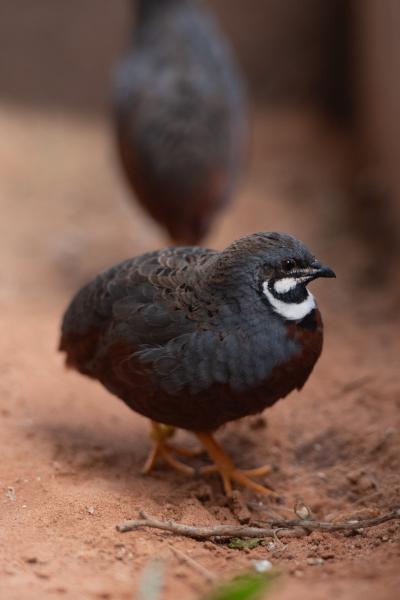
Hip, hup, hooray
Sometimes that means a treat ball they can roll around, and sometimes it means foraging through the brush to look for food. And foraging (especially for strawberries) is Hip and Hup’s favorite activity. Hip and Hup are two cavies who came to the Sanctuary from a zoo in Puerto Rico that was destroyed by a hurricane.
Cavies are large rodents who naturally forage in their native grasslands of Patagonia, so Sadie wanted to provide them with something a little closer to home. While they love rolling around and digging in the soft sand of their enclosure, Sadie thought they might enjoy some grass as well. However, grass doesn’t readily grow in the sandy soil of the Sanctuary. So the caregivers had to get creative.
“We started growing grass in large, shallow trays,” says Sadie. “They loved it, and it was fun to watch them plow through the grass. It provides them with a different textured surface to sit on and satisfies their natural grazing and foraging instincts.”
[Cavy curiosities: Meet our new wild friends]
And for some extra-fun foraging, caregivers tuck goodies like strawberries or peaches in the grassy trays, offering some sweet entertainment for the curious cavies. “We don’t give them fruit all the time because it’s so sugary, but it’s a fun treat,” says Sadie.
This delightful duo also loves the hay, pellets, fresh veggies, and greens that are the staple of their diet, and they often sport dapper green “mustaches” after chowing down (the latest in cavy fashion).
Sadie notes this type of interaction is also helping the shy brothers realize people aren’t so scary after all. “It's been really cool to see them come out of their shells,” says Sadie. “They're still a little skittish, but now they won't run away from you. They love sitting in the sun, so we’ll just sit quietly with them. It’s very peaceful. They’re sweet little guys with gentle spirits.”
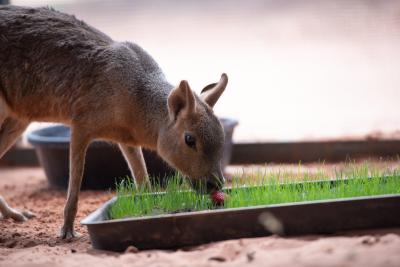
The cutest kings
While the cavies enjoy their hidden treats, they aren’t the only ones getting special attention. Caregivers and volunteers went all out to create a unique space for two of Wild Friends’ newest residents: king quail brothers John and Paul, who resemble extra-chunky robins with tiny tails and shimmering blue feathers.
“We filled their enclosure with plenty of underbrush and sticks they could hide under and built a little rock hideout, which is super cute,” says caregiver Ellë Greer. “They’ll come running out if you ring a little bell for food.” A sight to behold.
[Looking back: How Best Friends’ Wild Friends began]
Once the plump little brothers settled into their new digs, caregivers introduced a variety of fun activities to discover their favorites. It turns out they love pecking and rolling around small balls stuffed with tasty treats, and they eagerly jump up to snag juicy fruit caregivers hang in their quail quarters. Ellë notes that while hanging fruit may sound super simple, it encourages their natural behavior of jumping to eat insects.
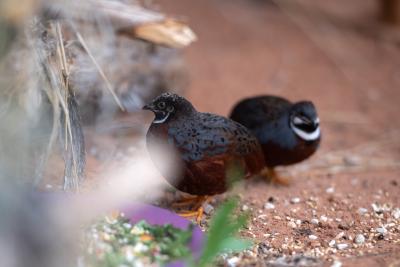
A little wild, a lot of love
Whether it’s foraging through fresh grass, rolling treat balls, or hopping for juicy fruit, variety keeps life fun for everyone at Wild Friends. For Hip, Hup, John, Paul, and their friends, every day brings a new adventure — and their caregivers wouldn’t have it any other way.
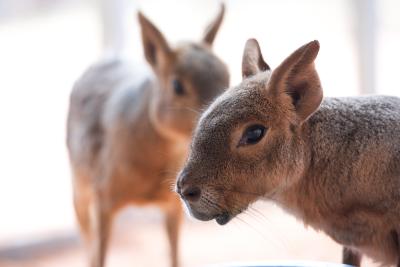
Let's make every shelter and every community no-kill in 2025
Our goal at Best Friends is to support all animal shelters in the U.S. in reaching no-kill in 2025. No-kill means saving every dog and cat in a shelter who can be saved, accounting for community safety and good quality of life for pets.
Shelter staff can’t do it alone. Saving animals in shelters is everyone’s responsibility, and it takes support and participation from the community. No-kill is possible when we work together thoughtfully, honestly, and collaboratively.
